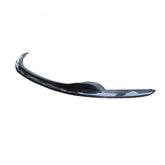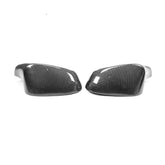Wheel design is not just about aesthetics; it involves complex engineering principles that affect a vehicle's performance, handling, and safety. Superior wheels strike a balance between strength, weight, and durability, using advanced materials and manufacturing techniques. Here's an insight into the science behind wheel design and what factors contribute to the superiority of a wheel.

Material Matters
-
Aluminum Alloy: Most performance wheels are made from aluminum alloys, which are lighter than steel. Lighter wheels reduce unsprung mass, improving vehicle handling and efficiency. The alloy composition can vary, with some mixes offering better strength or lighter weight.
-
Magnesium Alloy: Used in racing and high-performance applications, magnesium wheels are even lighter than aluminum. However, they are more expensive and can be susceptible to corrosion if not properly maintained.
-
Carbon Fiber: Emerging as a material for cutting-edge wheel design, carbon fiber wheels offer the best strength-to-weight ratio, significantly reducing unsprung mass. They are extremely expensive but offer unparalleled performance benefits, including quicker acceleration and improved handling.
Manufacturing Processes
-
Casting: The most common and cost-effective method, where molten aluminum is poured into a mold. However, cast wheels can be heavier and less durable than those made by other processes.
-
Forging: Involves pressing a solid piece of aluminum under high pressure to form a wheel. Forged wheels are stronger, lighter, and generally perform better than cast wheels but are more expensive due to the manufacturing complexity.
-
Flow Forming: A hybrid between casting and forging, this process starts with a cast wheel that's then spun and heated while rollers press against the rim to compress and stretch the metal. This creates a wheel that's lighter and stronger than a standard cast wheel but more affordable than a fully forged one.
Aerodynamics
- Design Efficiency: Aerodynamic efficiency plays a critical role in wheel design. Properly designed wheels can reduce drag and even create aero benefits, improving fuel efficiency and high-speed stability. Some designs also help with brake cooling, enhancing performance.
Structural Integrity
-
Load Rating: Superior wheels are designed to withstand the vehicle's weight and the stresses of driving, including cornering, acceleration, and braking forces. The load rating ensures the wheel can handle these forces without failure.
-
Durability: Wheels face constant exposure to road debris, chemicals, and varying weather conditions. Superior wheel designs incorporate finishes and coatings that resist corrosion and wear, prolonging the wheel's life and maintaining its appearance.
Compliance and Testing
-
Safety Standards: Superior wheels adhere to stringent safety standards, such as those set by the TÜV in Germany, JWL in Japan, or DOT in the United States. These standards ensure the wheels meet specific criteria for strength and durability.
-
Testing: Rigorous testing, including simulated driving conditions, impact resistance, and fatigue testing, is crucial. This ensures the wheels can withstand real-world use without failure, contributing to vehicle safety and reliability.
The Perfect Balance
A superior wheel design is the result of meticulous attention to material selection, manufacturing processes, aerodynamics, structural integrity, and compliance with safety standards. While the quest for lighter wheels continues, it cannot compromise strength or safety. The ultimate goal is to enhance the vehicle's performance, efficiency, and aesthetics, making wheel design a critical aspect of automotive engineering and design.










